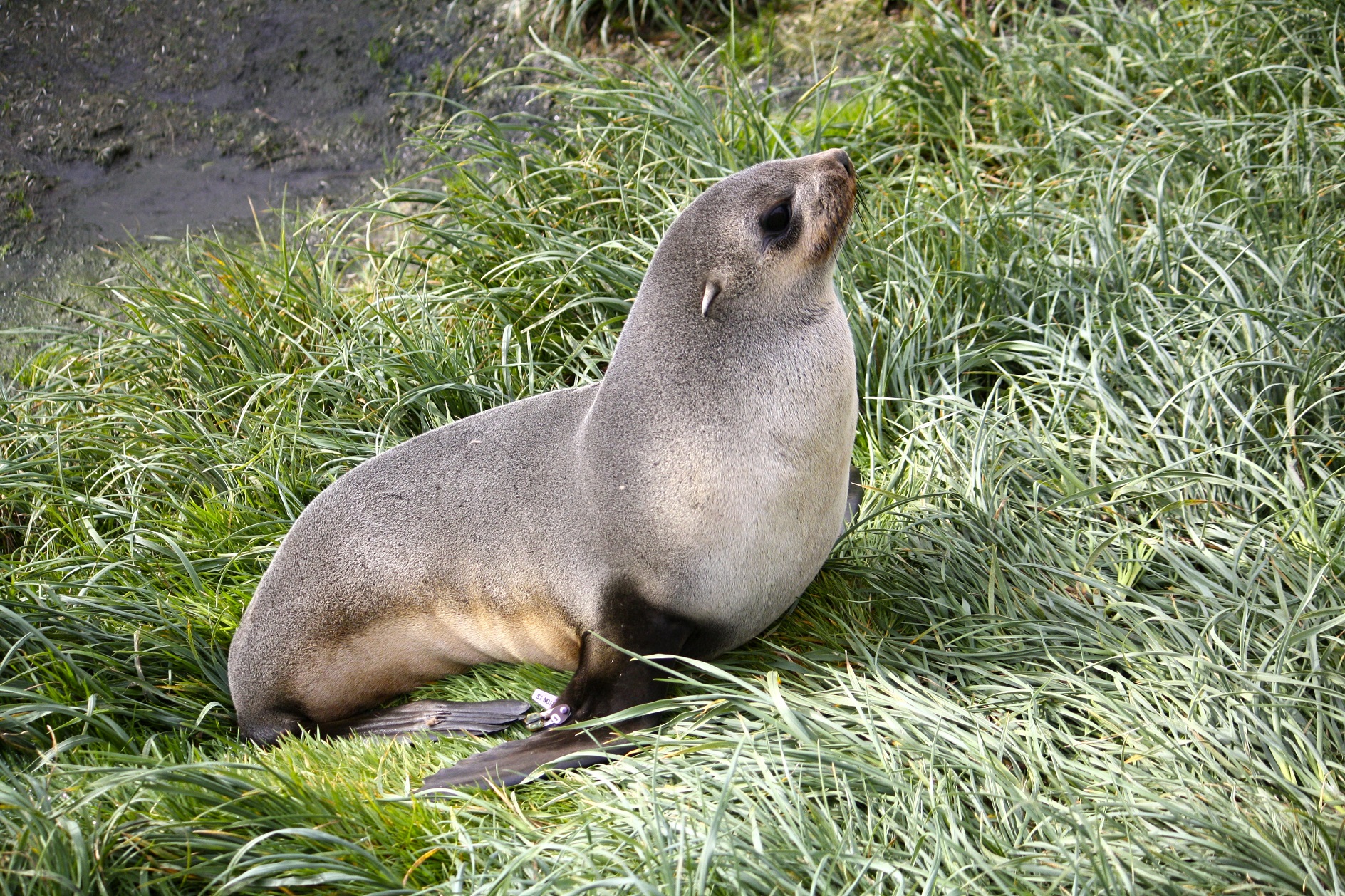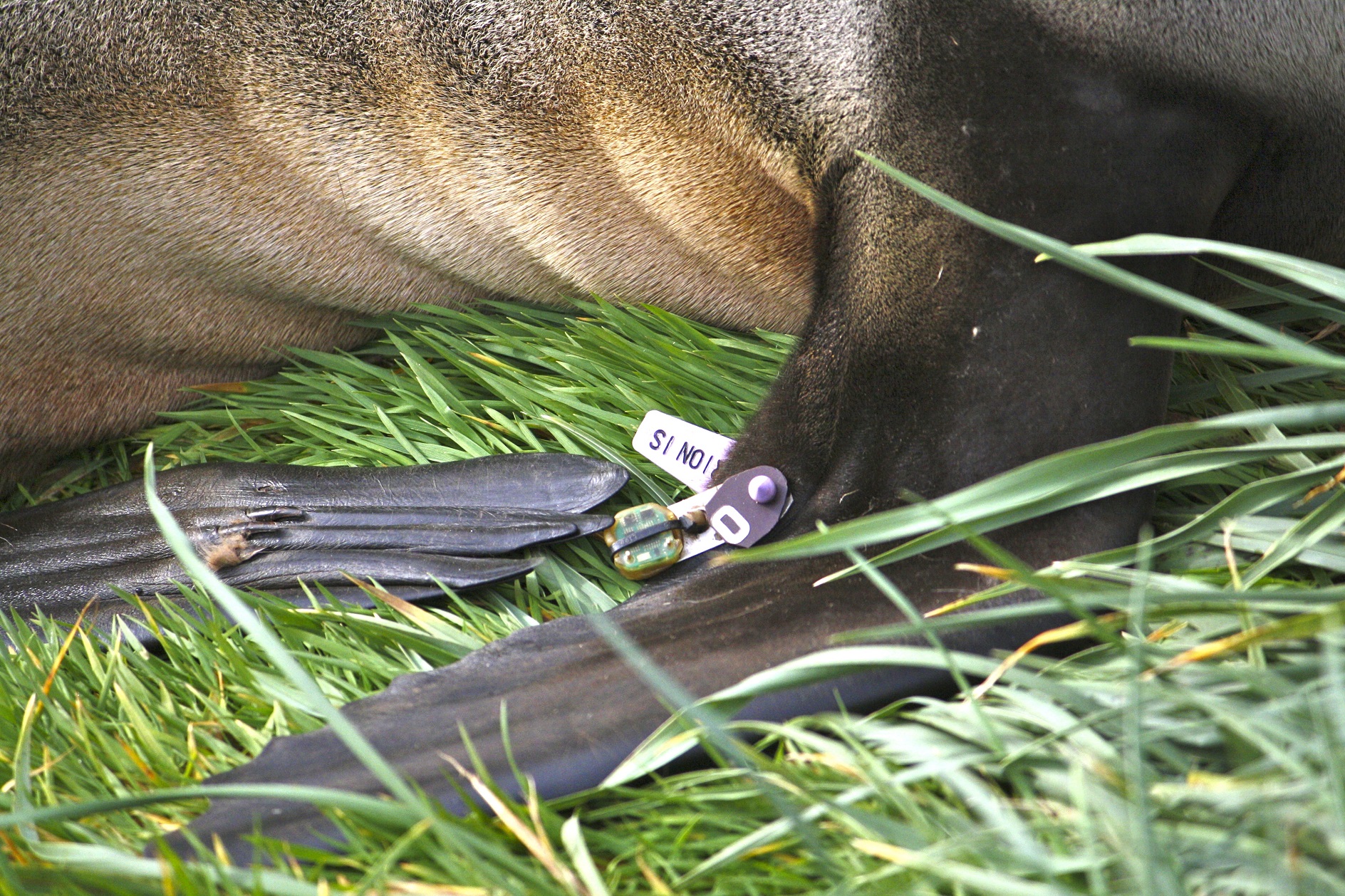
Small sensors and tags attached to animals, birds and fish are providing scientists around the world with unprecedented insights into the behaviour of wildlife.
From analysing the feeding habits of sub-Antarctic seals to understanding the movement patterns of albatrosses, IMAS researchers use geolocation sensors to access data that can be used to improve management and conservation of our natural environment.
But, as with any new technology, there are teething problems. (Images of tagged seal, credit: Ben Arthur)
Solar geolocation sensors record sunlight to allow the calculation of a tagged animal’s daily locations, inferring latitude and longitude from day length and the time of mid-day. For this, the time of sunrise and sunset needs to be accurately recorded.
 If light to the sensor is blocked by obstructions such as feathers, vegetation, deep diving or heavy cloud cover, particularly around twilight, its data can be error-ridden and unusable. This wastes a lot of tagging and tag-retrieval efforts, which in extreme or distant environments such as Antarctica, are costly and difficult.
If light to the sensor is blocked by obstructions such as feathers, vegetation, deep diving or heavy cloud cover, particularly around twilight, its data can be error-ridden and unusable. This wastes a lot of tagging and tag-retrieval efforts, which in extreme or distant environments such as Antarctica, are costly and difficult.
Now, a new IMAS study published in the journal Methods in Ecology and Evolution has provided a solution to the twilight problem.
Lead author Aidan Bindoff, who carried out the research as part of his Honours degree, said the new method uses computer algorithms to analyse the overall pattern of day and night recorded by a sensor across the animal’s journey, removing the dependence upon twilight readings.
“Because it is not necessary to identify twilights using this approach, we call it a “twilight-free” method of solar geolocation,” he said.
“This solution requires minimal user input and uses fast, efficient algorithms to arrive quickly at the best estimate of locations from the observed data.
“Previously unusable geolocation data can now be used, and already we have begun work to salvage collected data that hasn’t been published for lack of a suitable method of analysis.
“The twilight-free method is best suited to analysis of long-range movements of sea-birds, which are known to frequently obscure sensors, and species such as elephant seals and penguins, whose deep underwater dives reduce the amount of light reaching a sensor.
“Quantifying where animals are going and when, and monitoring changes in their habitat, is fundamentally important to the conservation and management of many populations and species.
“Hopefully, by effectively increasing the proportion of tags yielding usable data, we can contribute to this work in a meaningful way,” Mr Bindoff said.
IMAS co-author Dr Simon Wotherspoon said the study would enable an important step forward in the use of geolocation data.
"The great strength of this approach is that it produces high quality locations with a minimum of effort from the analyst, which is a considerable improvement on current methods,” Dr Wotherspoon said.
The R package `TwilightFree` and tutorials can be found at https://github.com/ABindoff/TwilightFree